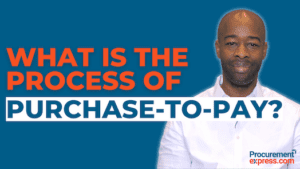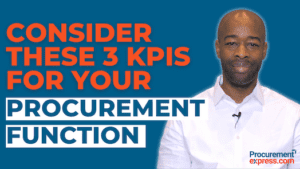In today’s video, we will discuss engaging in supply without a contract. Although this is possible, it isn’t advisable, as it opens you up to additional risks. Without a contract in place, things like pricing, delivery times, and obligations remain vague.
Furthermore, there is no clear procedure on what to do if a supplier doesn’t deliver on time, delivers work of unsuitable quality, or if you require indemnification. By creating a contract with the terms discussed in this video, these risks can be avoided.
Our experience in the procurement industry has taught us one valuable lesson: always get a contract. Companies sometimes avoid contracts in the name of making a process faster, cheaper, or because they prefer more informal agreements. However, more often than not the lack of a contract creates more problems than it solves. Yes, drafting contracts takes time and money, but they always pay for themselves in the long run.
If you want to learn more about the importance of a contract, and how to draft one that minimizes your risk, then this article is what you need.
The reason why you need a contract
The point of a contract is to indicate, in writing, the terms of your relationship with your supplier. It establishes what their obligations are, what they’ll provide, how much it’ll cost you, and what happens if they fail to uphold their end of the agreement.
The idea is to leave out any unknown variables. Without a contract, you don’t really know where you stand when an issue comes up. What happens if a supplier doesn’t deliver? Do you receive any kind of compensation?
A contract helps you avoid those questions by giving you concrete answers from the start. Not only that, but contracts also reinforce to the supplier the need to deliver on what was agreed on, without changing the terms along the way.
Elements of a standard contract
When you are looking to draw up a contract, you should ensure that it includes the following elements:
- The expected delivery timeframes
- The responsibilities of both parties
- The pricing and payment details, including the invoice process, payment schedule, and pricing mechanism
- The level of services or quality of the product you’ll get, as well as after-sales assistance
- The terms and conditions of your partnership, including any clauses for contract renewal or exit
- Confidentiality clauses
- Performance and review criteria
- Indemnity, refund, and compensation provisions
There are other elements you can specify, such as intellectual property clauses, the rights and ownership to the goods, and other liability concerns, but those would depend on your specific situation.
How to draft a contract that minimizes your risk
The main purpose of a contract, aside from clearing out where everyone stands, is to minimize the risks you are taking. And there are a few ways you can draft a contract so that the risk is as low as it can be. When coming up with your supplier contract, consider the following:
- Specify how you intend to use the products or services from the supplier and ask for written confirmation that what they are selling will fit your needs.
- Ask if there are any potential usability concerns or problems that you need to be aware of, and keep a written record of any assurances to the contrary
- Specify, in detail, what’s going to happen if the supplier fails to deliver the goods or if there are any problems with them once you receive them. What kind of compensation would you receive in that scenario? You could establish penalties for not meeting your delivery times or quality standards, like future discounts
- Last but not least, make sure the contract is written with an eye for protecting your interests and, if possible, in a way that shifts legal responsibility to the supplier if there are any issues that come from their products and services.
Conclusion
Drafting a contract can be a hassle, but it’s a surefire way to protect you and your company from unnecessary risk. At Procurement Express we pride ourselves in giving you the information and tools you need to create the perfect contract.
For those interested in learning more about the procurement process, you can head to our education resources or request a demo with us. We’d be happy to teach you all you need to know, and what better way to learn than to learn from the experts.




